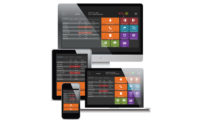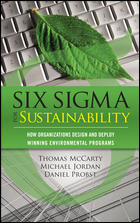The recent implementation of the new quality management system requirements has generated concerns about many issues including documents and standards. There are many types: ones that apply to a wide spectrum of products and services, ones that cover a range of processes and test methods and even ones that provide guidance or requirements for a company’s management system.
With regard to purchased goods and services, standards are most often invisible to consumers. Customer expectations are critical to keep in mind as well as those of the supplier organization when dealing with documents and standards. Standard developers as well as users need to be constantly vigilant to ensure these documents work for the benefit of all.
It is widely accepted that identification of product, process and testing requirements is a critical element of any effective quality management system. Proper use and control of these standards is needed for the overall quality management system to meet its objectives. This is an important concept and if this attitude is overlooked, it can cause a multitude of difficulties. There are a few key rules that should be considered when working with internal documents or external standards.
Rule #1: Get in the proper mindset. Read the standard carefully with a positive attitude. You will likely find that most of the content is fairly straightforward and easy to understand. Take careful notes on those areas that appear to be unclear or seem to suggest requirements that may be difficult to accomplish.
Rule #2: If it says it, it means it. When confronted with what might be the most difficult interpretation to be implemented, remember that if the document can be interpreted that way, it is very likely to be by others as well. Confusion leads to costly mistakes. Seasoned quality professionals know the difference between requirements (with use of key words like “must”) and guidance (using words like “should”). Usually guidance is considered optional, however, in some situations guidance can become a de facto requirement. Failure to follow reasonable guidance, in some cases, can result in problems; therefore, this rule can have critical importance.
Rule #3: Brainstorm the most efficient method to implement requirements. Do this by listing all of the requirements and then brainstorm a list of the ways to achieve compliance for each requirement. Commonsense methods of implementation are the best, but if you can’t find a commonsense approach, then seek other ways to do so. One good way is through the use of tools like Process Failure Modes and Effects Analysis (PFMEAs) to determine the risks of not meeting requirements.
Rule #4: Test your own method. Even in cases where you have no question as to what is required, it can be useful to cross-check to be certain all of the bases have been covered, particularly if the standard is complicated. It can be beneficial to consult with someone else with applicable experience (i.e. consulting with a heat treat engineer when the standard applies to heat treatment) to obtain valuable input.
Rule #5: Seek clarification. When confronted with unclear areas of a document, work with the appropriate personalities to obtain clarification in order to reach a conclusion that will benefit all concerned. If discussions are held upfront, they can often be a source of long-term cooperation and understanding between the parties. If you can’t reach agreement on a reasonable approach, you may just need to find the most practical way to comply with the interpretation.
Rule #6: Plan for change. Once all of the requirements are appropriately identified and clarification has been obtained, identify the gaps between what your organization has done in the past and what is now required. You will need to identify the changes in processing by considering equipment changes (new or improved), technology changes, training issues, et al, which will be needed for implementation. These changes need to be fully documented and agreement reached from all parties involved.
The basic message is that everyone should be viewing standards as baselines for improvement. Once a better way is found, the changes should be formalized to reflect the new process. In other words, a change is never complete until it has been formally documented and improvement comes from compliance. Failure to do so will result in slipping back to the old ways.
Improved standards can make life better for everyone. Users are the key to improving standards because they see issues never imagined by non-users. Bottom line, we should encourage everyone to get involved in making standards the best they can be. It can really be a rewarding task to do because standardization is a significant component of an organization’s continuous improvement initiatives.




